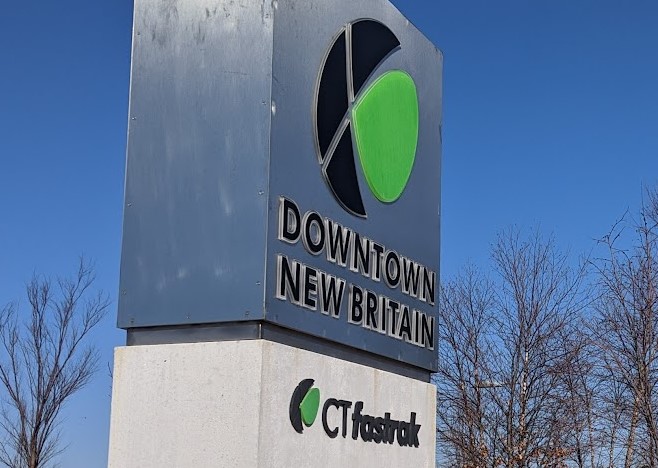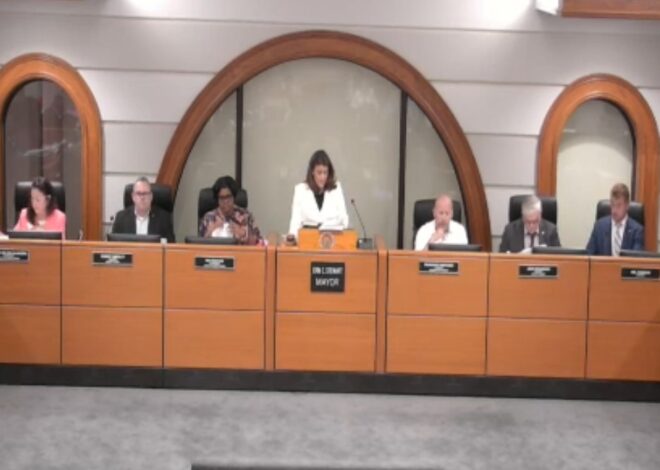Press Pool Story
A critique of Republican Mayor Erin Stewart’s education record by Democratic City Council candidate Bobby Berriault sparked a heated internet debate in January about education in New Britain and whether to view statistics about the city’s schools as a sign of progress or as a measure of how far the community has yet to go in providing a quality education for its youngest residents.
The debate started when Berriault published a Facebook post listing a wide ranging series of economic, budgetary and other concerns about Stewart’s administration of city government. Three of those comments concerned education in New Britain:
- “75% graduation rate meaning 1 out of 4 students drop out before graduation”
- “class sizes are average 24 students per teacher one of the highest in the nation”
- “one of the lowest test scores in the state”
 But it was the latter part of the point on the city’s graduation rate, whether 1 out of 4 New Britain students drop out of from the city school district, that became the focal point of criticism. Republican Board of Education President Nick Mercier and others criticized Berriault’s statement as untrue, saying the Berriault’s comment that “1 out of 4 students drop out before graduation” was false.
But it was the latter part of the point on the city’s graduation rate, whether 1 out of 4 New Britain students drop out of from the city school district, that became the focal point of criticism. Republican Board of Education President Nick Mercier and others criticized Berriault’s statement as untrue, saying the Berriault’s comment that “1 out of 4 students drop out before graduation” was false.
More recently, Matthew Cannata, Board and Public Relations Specialist for the New Britain school district, said, “The graduation rate is misunderstood. Just because the graduation rate is 72%, it does not mean that 28% are dropouts.”
New Britain school district statistics say that the New Britain High School graduation rate in 2015-16 was 75.3%.
Berriault said that his statements were based on the understanding that, “the standard for the graduation rate is the percentage of children enrolled in the school system that succeed in completing the education and earn their high school diploma within four years of starting the ninth grade.” The Connecticut State Department of Education’s statistical documentation says that, “The four‐year cohort graduation rate is calculated by tracking an individual cohort (or group of students) from their initial entrance into 9th grade through to graduation with a regular high school diploma in four years or less.”
But those disputing that “1 out of 4 students drop out before graduation” say that it is unfair to say that students who do not graduate in four years never do graduate from the New Britain schools, since many students graduate in their fifth year of attendance. By the statistical measure that is at issue, that fifth year only refers to students who actually graduate from the New Britain school district. Cannata said, “To be on the five-year, you have to be still enrolled at the high school. Students going to Adult Education or GED programs are not considered part of this. I believe they are actually part of the drop out number.”
But how many students do actually drop out from the New Britain school district?
When the Progressive asked the New Britain school district for statistics on the number of students who graduate in five years, rather than four, Cannata referred the Progressive to the State Department of Education’s statistics website. That website had statistics that allowed the Progressive to calculate that an average of 7.6% of students graduate from the New Britain school district in five years, rather than four. Those average statistics also show that adding the number of who graduate by the sixth year brings the number of students who graduate from the New Britain school district after their fourth year to 9.4%.
But the 75.3% graduation rate cited, a statistic of New Britain High School graduation, does not appear to correspond to the “New Britain School District” graduation rate presented on the state data website. There is a separate statistic referring “New Britain High School”, but the statistic corresponding to what the state uses for district graduation rate shows New Britain’s 2015-16 graduation rate to be 70.3%.
If 70.3% of students graduated from the New Britain school district in 2015-16 and an additional 9.4% graduate from the district within two additional years, it could mean that around 20%, or 1 in 5 students do not graduate from the New Britain school district.
Berriault insists that whether the real dropout rate is 1-in-4 or 1-in-5 misses the larger point. “The Republican members of the Board of Education have a job to do,” he said, “and they should be more focused on fixing the city school system and less focused on scoring cheap political points against their political adversaries while ignoring the larger issue, which is we desperately need to change the way the city schools are financed and managed. If they aren’t willing to change things for the better, I will.”
Cannata, speaking for the school district, also sought to bring the debate back to the bigger picture. He emphasized that the statistics show marked improvements in the district’s graduation rate. He provided the Progressive with a set of statistics, “that shows the graduation rate growth from 2011-2016.” Those figures show that the New Britain High School graduation rate was 75.3% in 2015-16, up 5.3% from the previous year.

The “New Britain School District” graduation rate, that appears to correspond to what the state uses to measure the district graduation rate, also shows a significant improvement in New Britain’s graduation rate, from 51.3% in 2010-11 to 70.3% in 2015-16.

But, even with that progress, New Britain’s graduation rate is still among the lowest among Connecticut’s school districts. In 2014-15, New Britain’s graduation rate was the second lowest in the state. Only Bridgeport had a lower graduation rate.
Berriault says that the intense debate over statistical minutiae has distracted from the point of his critique, that there are significant issues in the city that should be addressed.
“I love New Britain. New Britain is my home. I just want to make it better,” Berriault said. “No child should ever be left behind, and we need leaders who will look after 100% of our children.”
Editor’s note: The New Britain Progressive analysis of graduation after four years of attendance is based on averages of past years and, as such, does not necessary indicate the number of students, who did not graduate in 2016 after four years of attendance, who will ultimately graduate from the New Britain school district in 2017 or later.
Editor’s update 2/26/2016: The article previously referred to “New Britain High School” graduation rate as not corresponding to state graduation statistics. The state statistics website do present separate “New Britain High School” and New Britain school district graduation rates. Each does correspond to data provided by the school district, but only one refers to data for the New Britain school district. The article was corrected to reflect this.



